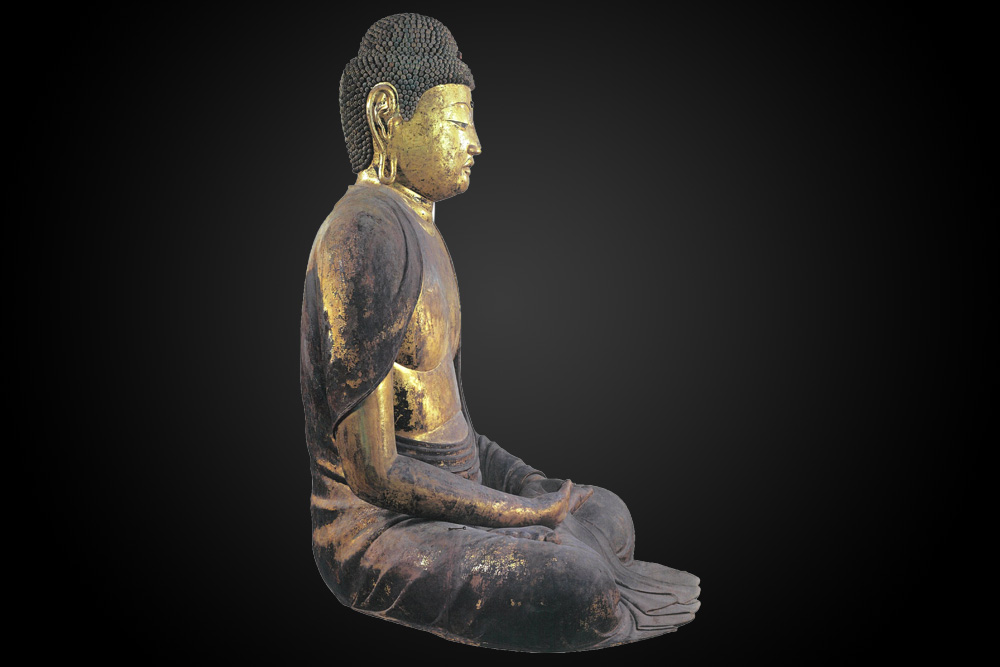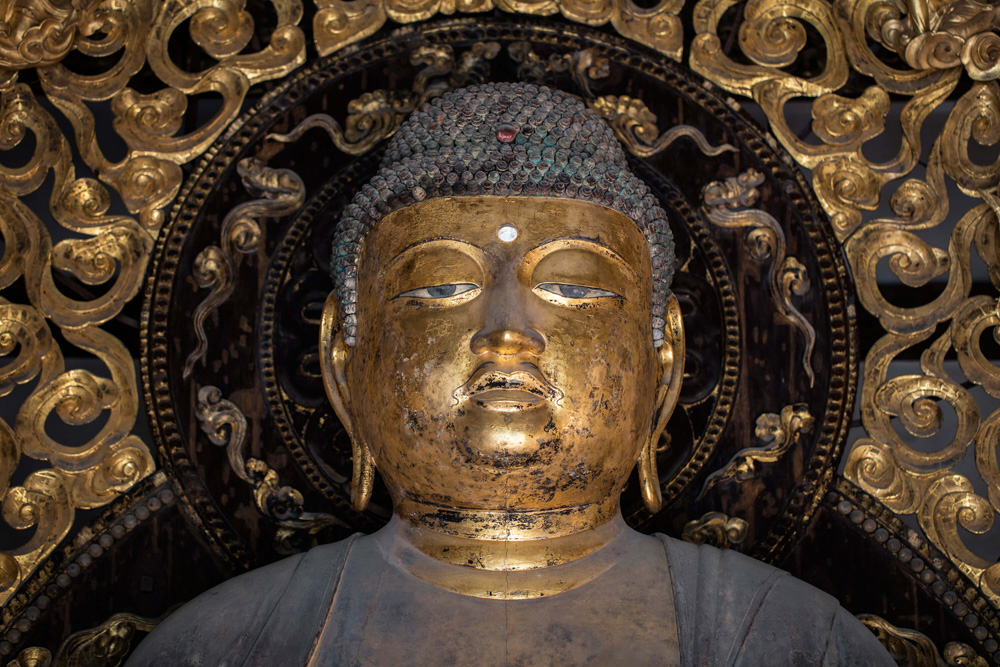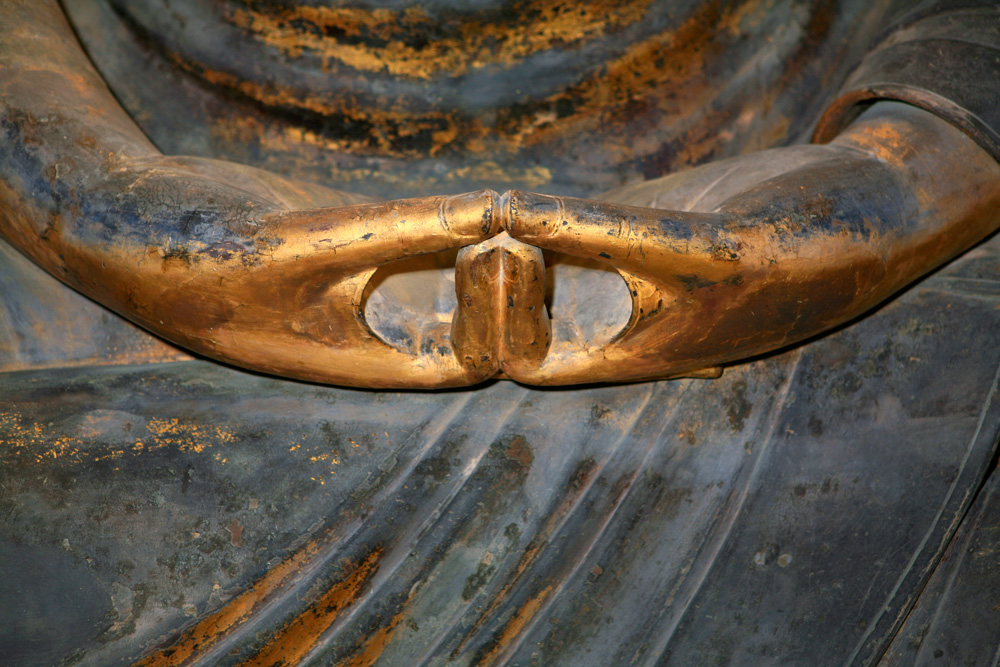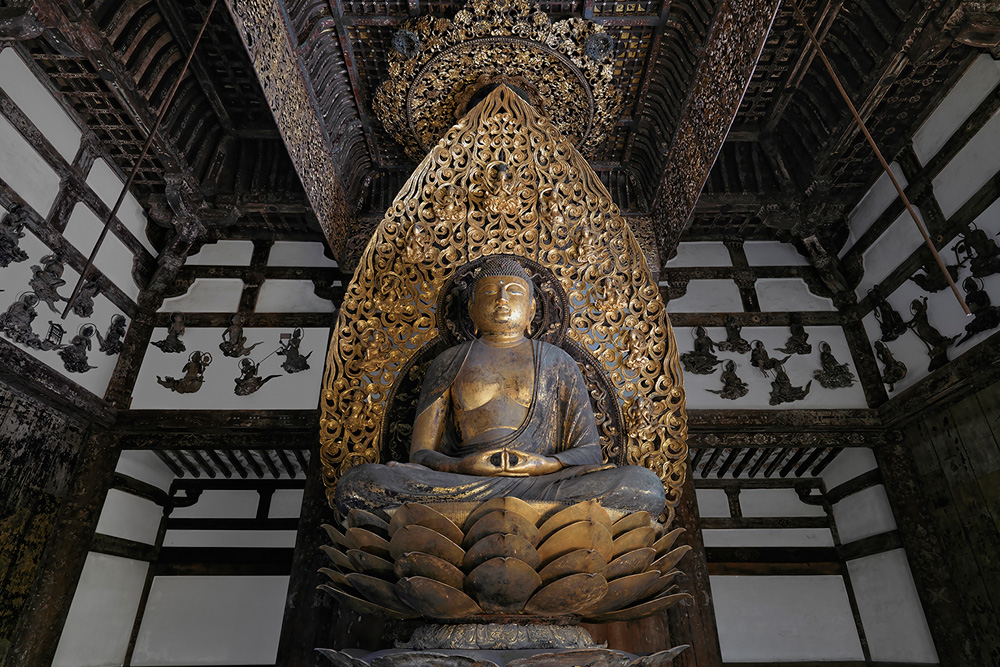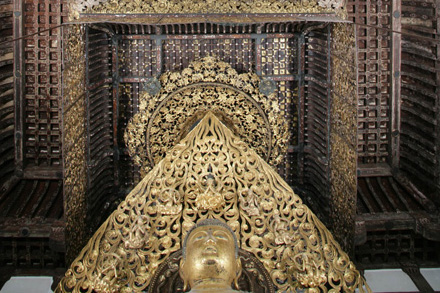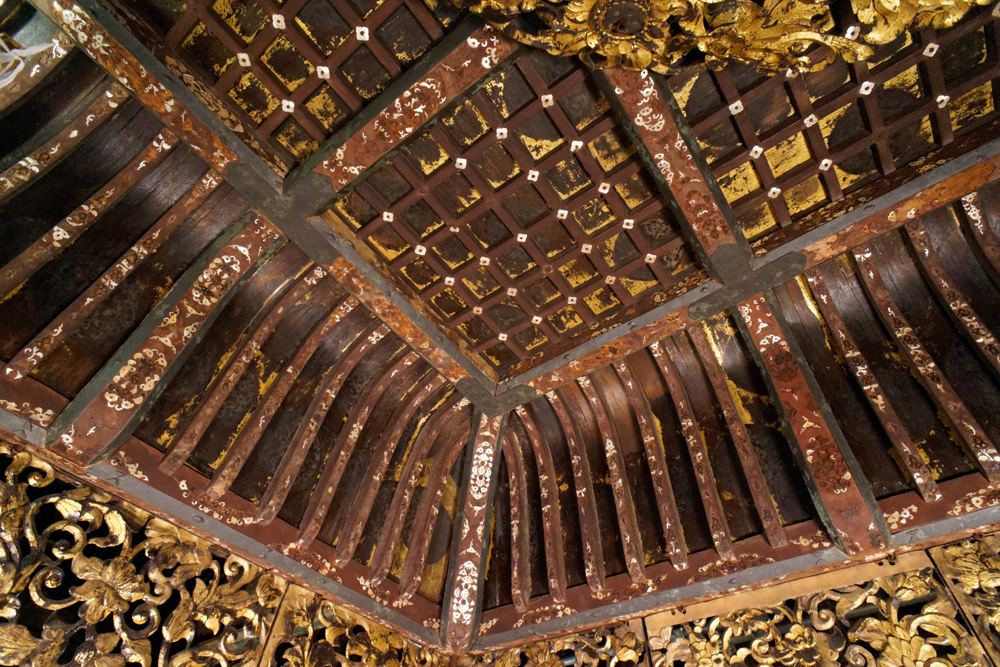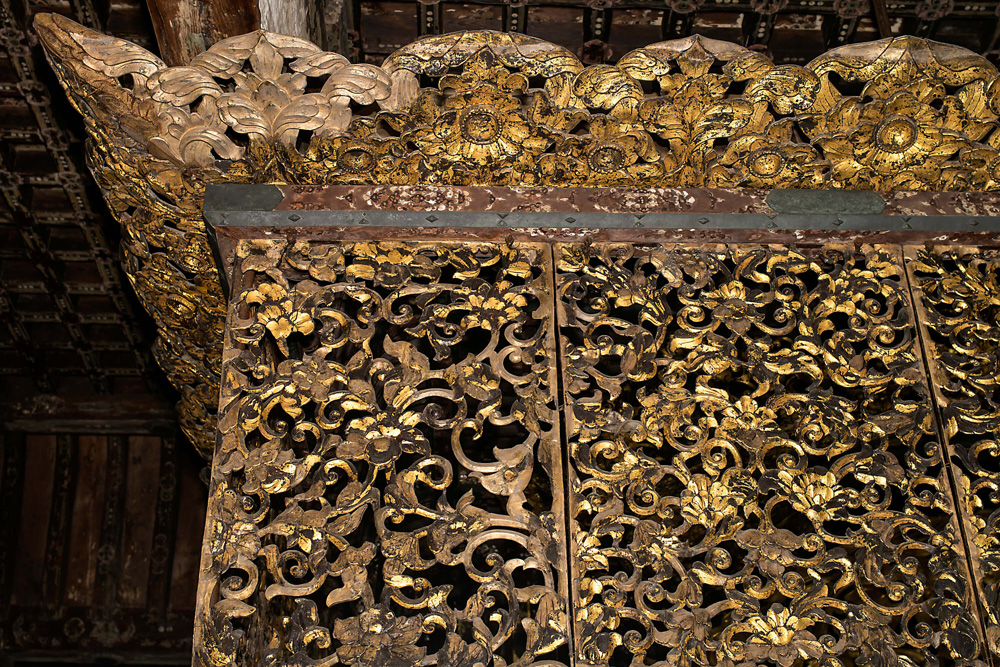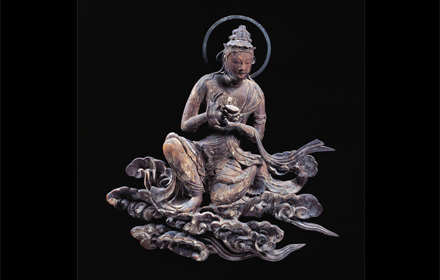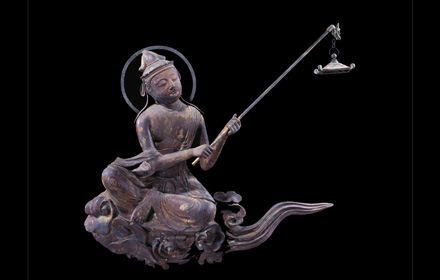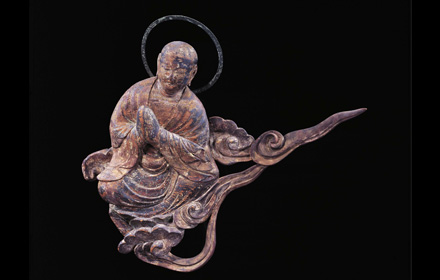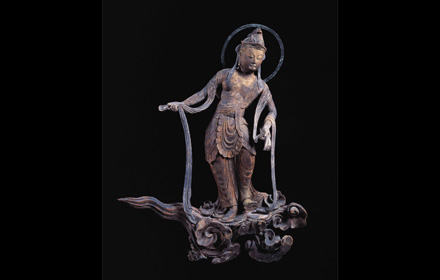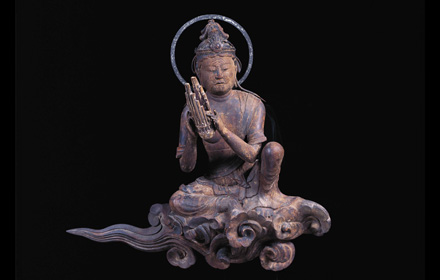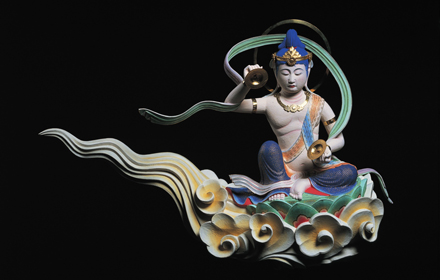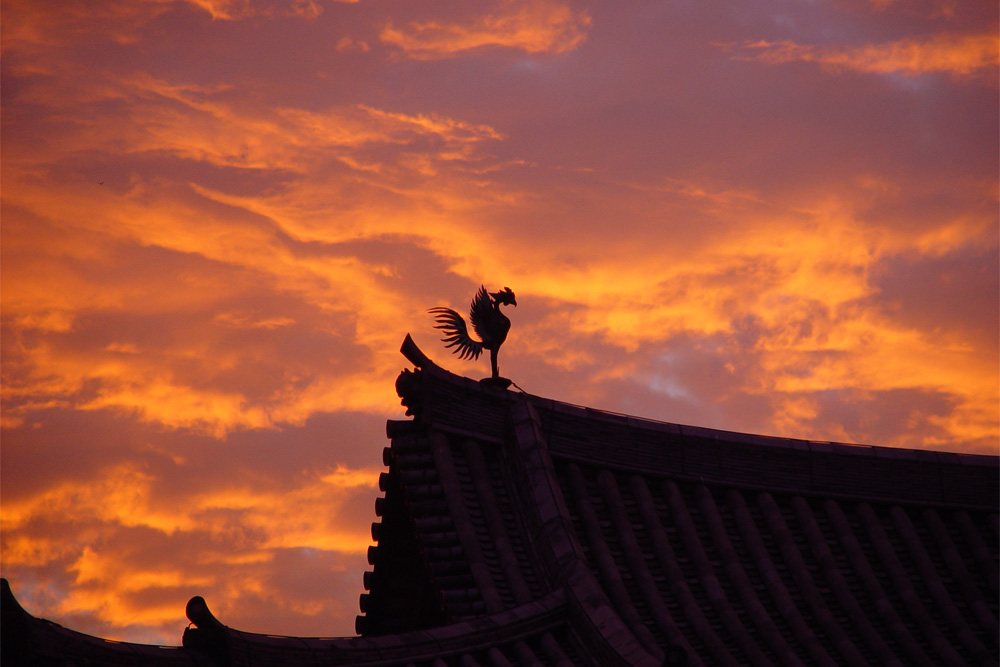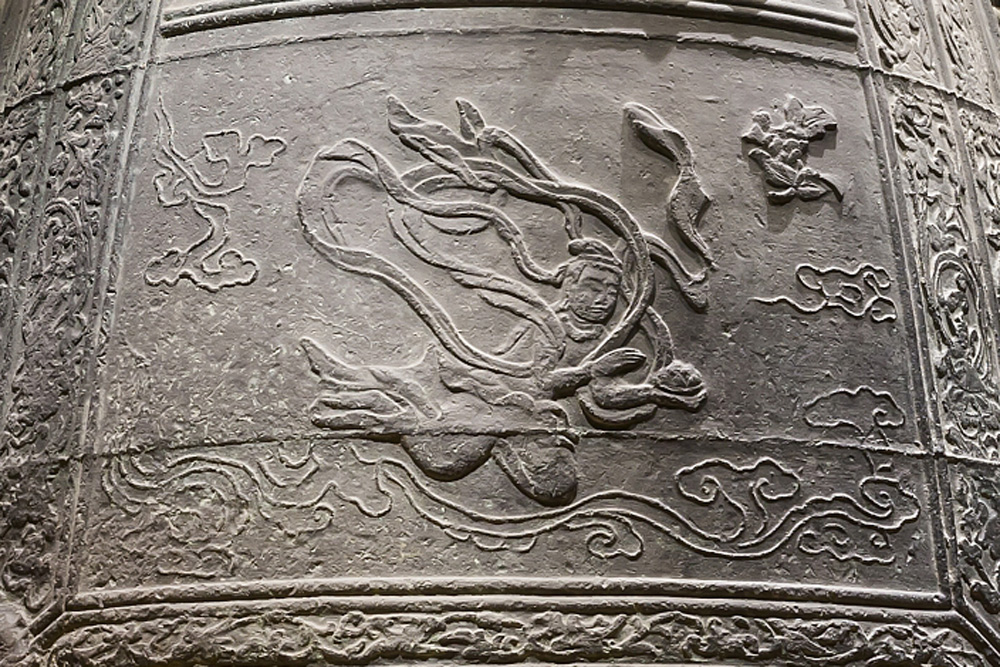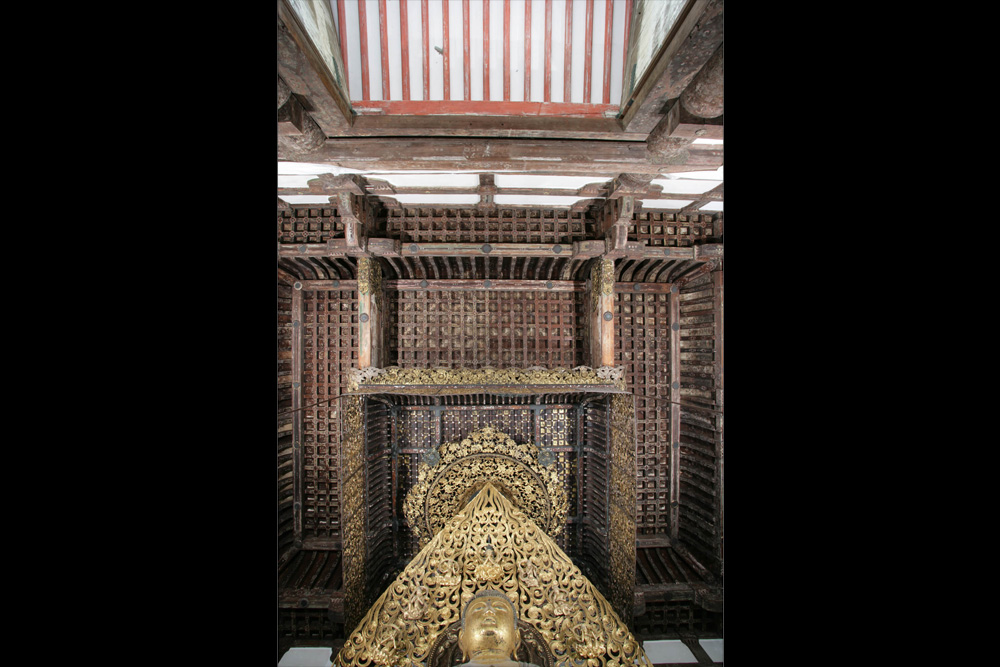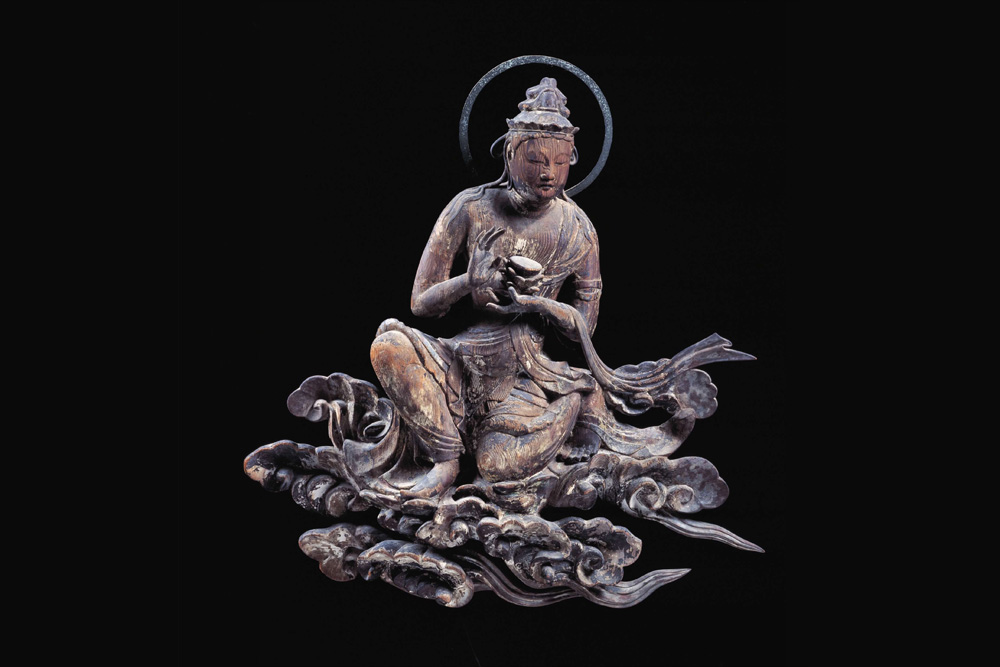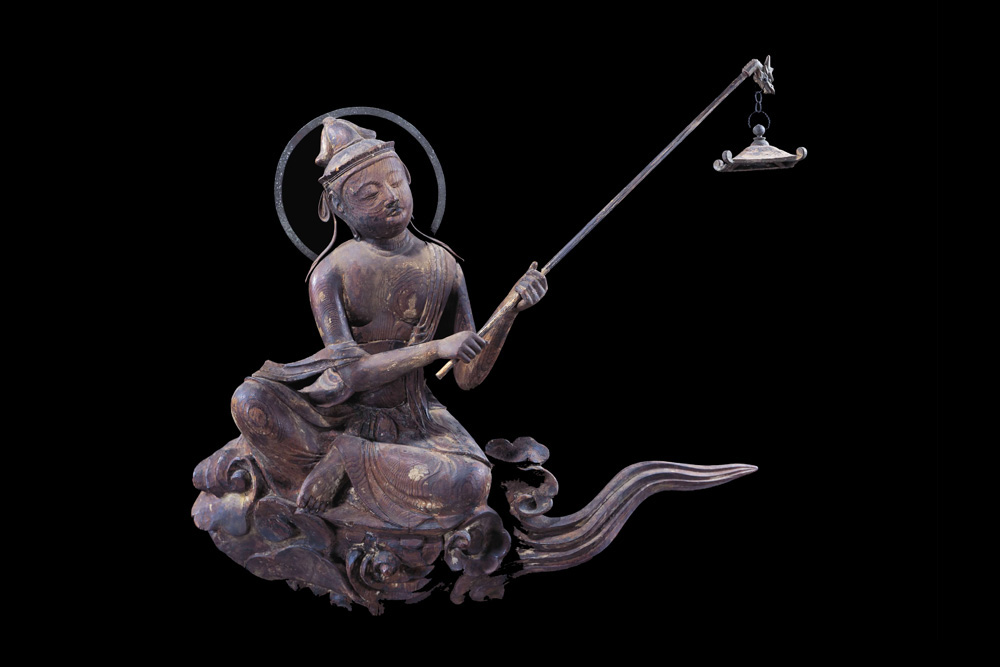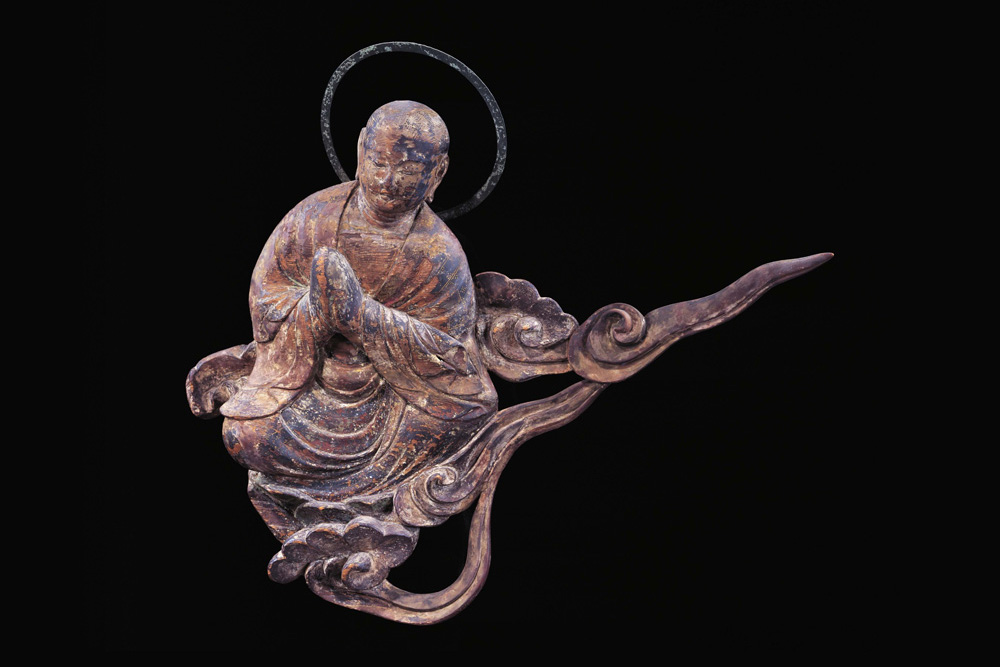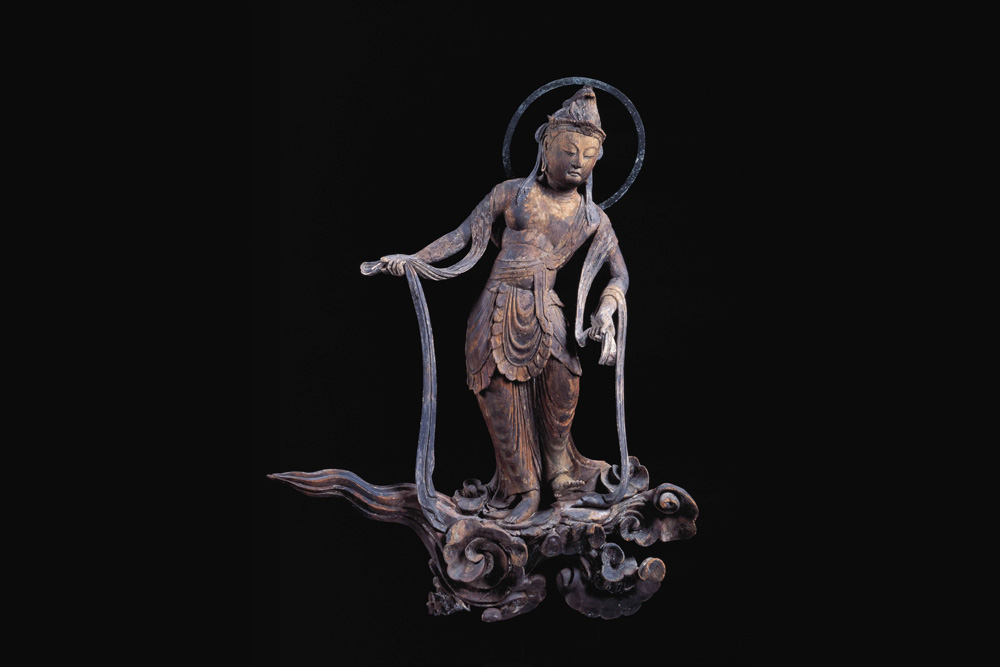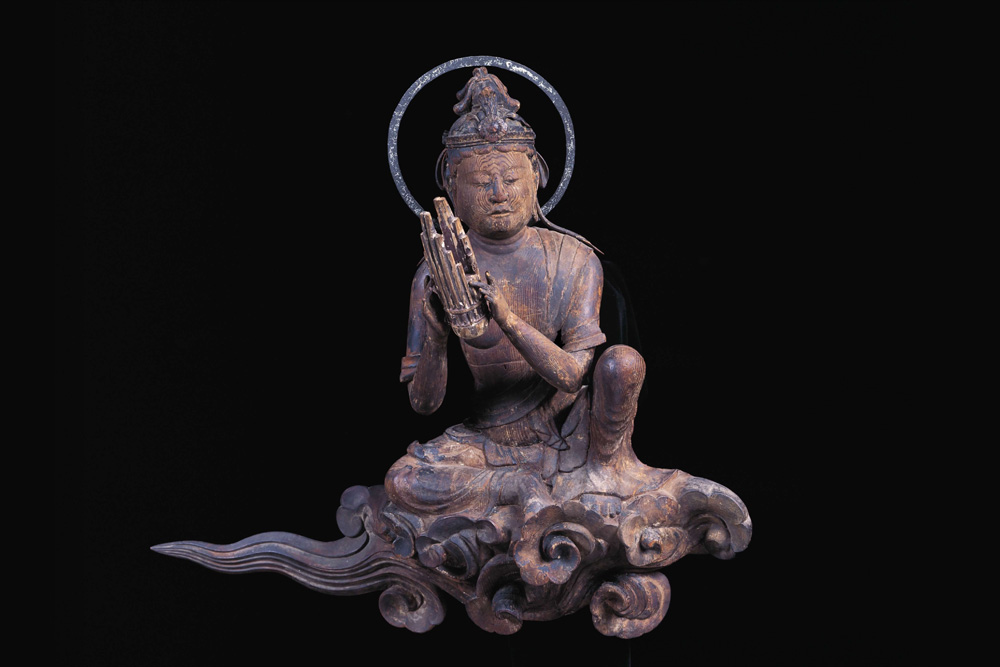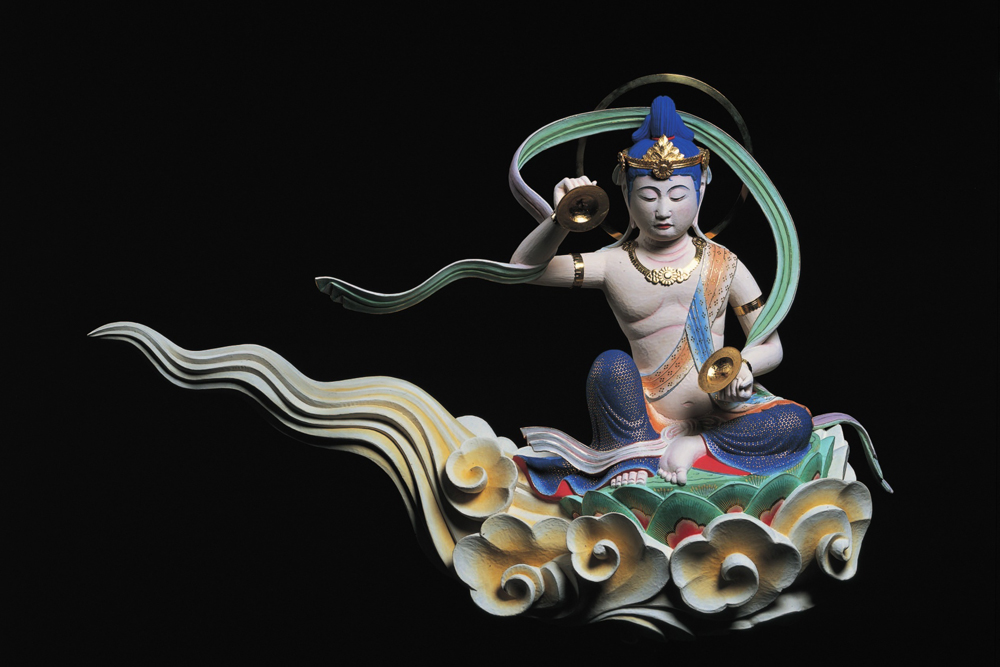The principle image of Amida Buddha was created by Jocho, who is claimed to have been the very best Buddhist sculptor in Japanese history, and this Amida Buddha is the only remaining statue fashioned by him still existing today. It was completed in 1053, in the late Heian period and employs a Yosegi-zukuri (wooden mosaic work) structure which is also known as the Jocho style. The beauty of this Amida Buddha by Jocho has been praised and referred to as the “True Figure of Buddha,” in other words, the most idealistic sculptured image of Buddha.
彫刻・工芸
Sculpture & Craft
Insatiable Spirit of Inquiry for Virtue and Beauty
– Supreme Treasures of Byodoin Temple
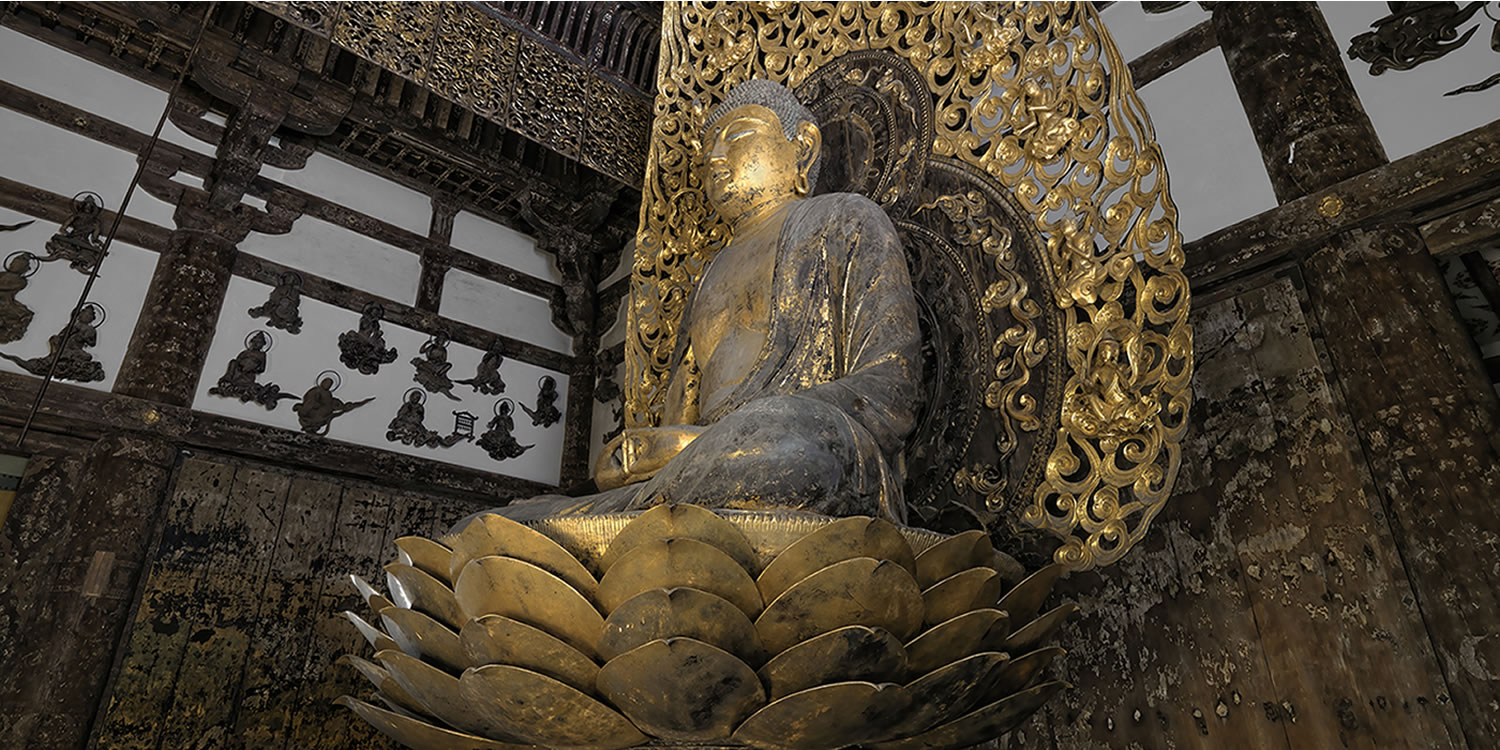
Amida Buddha (Amida Nyorai)阿弥陀如来坐像
[National Treasure] Height: 277.2 cm Made of wood covered in gold leaf on Japanese lacquer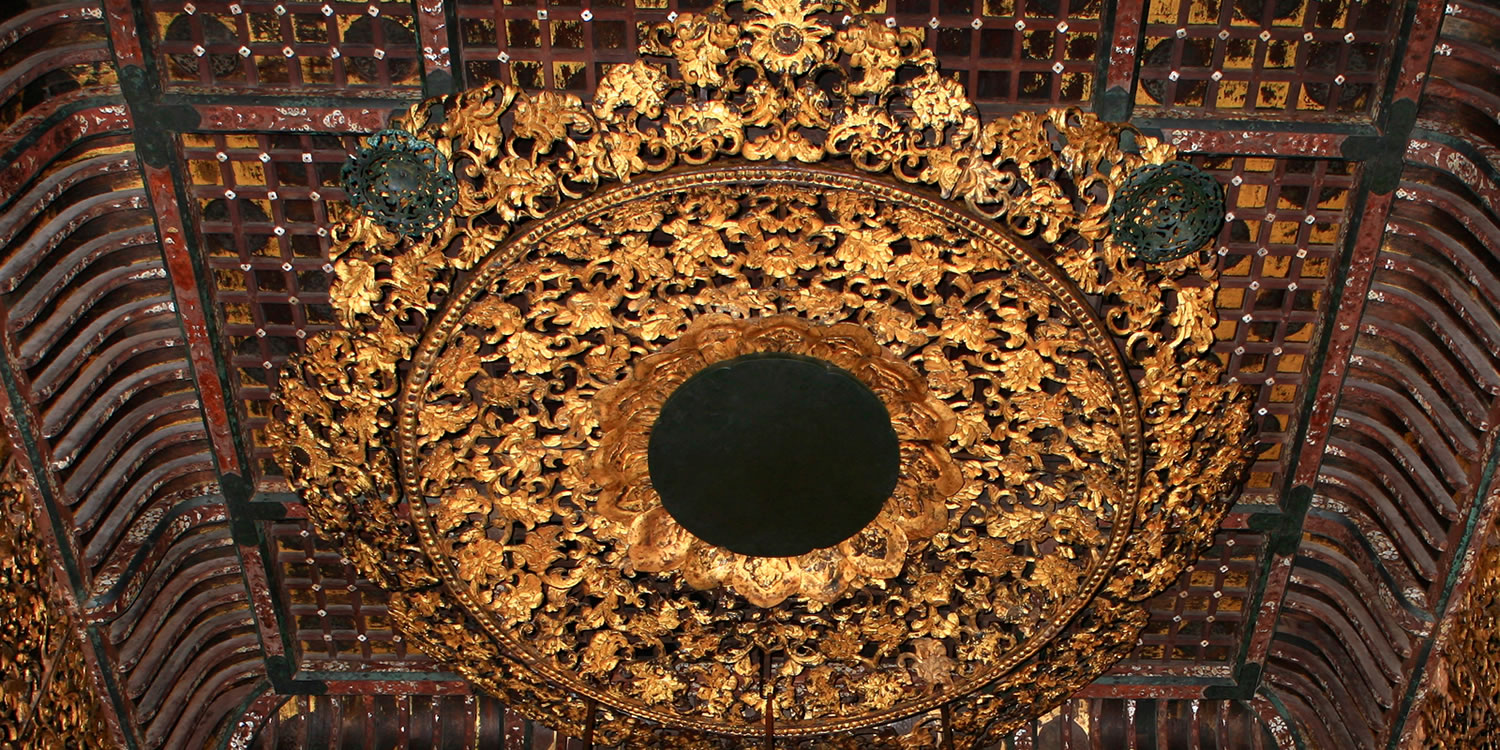
Canopy天蓋
[National Treasure]A decorative canopy hangs above Amida Buddha. At the center of the canopy, there is a large octagonal bronze mirror in a flower shape which could have reflected lights onto the hall's interior.
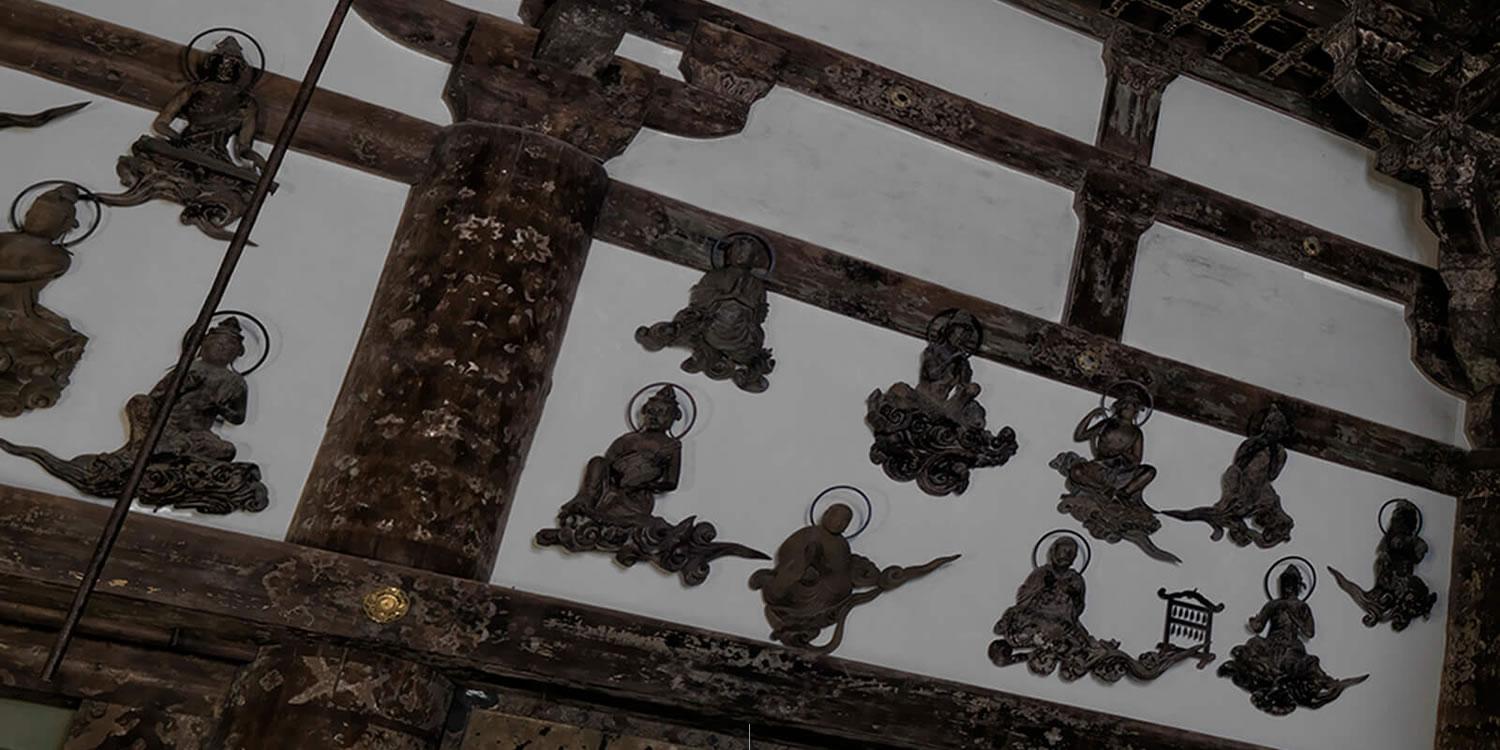
Praying Bodhisattva (Buddhist Saint) on Clouds雲中供養菩薩像
[National Treasure]52 statues of Bodhisattva (Buddhist Saint) are hung on the upper wall in the Chu-do Hall of Phoenix Hall. Like the statue of Amida Buddha, all of the Bodhisattva statues were created by Jocho's studio in 1053. The groups of Bodhisattvas surround the Amida Buddha in a U-shape on both the north and south side. Both groups are made up of 26 statues, each of which is numbered from 1 to 26. All the Bodhisattva have a halo (circular light) around the head and ride on the flying clouds in a variety of poses. Five of them are in the form of Biku (Buddhist monk) and the others are in the form of Bosatsu (Bodhisattva). Some play musical instruments, some dance, while others hold an item in their hand or join their hands together in prayer.
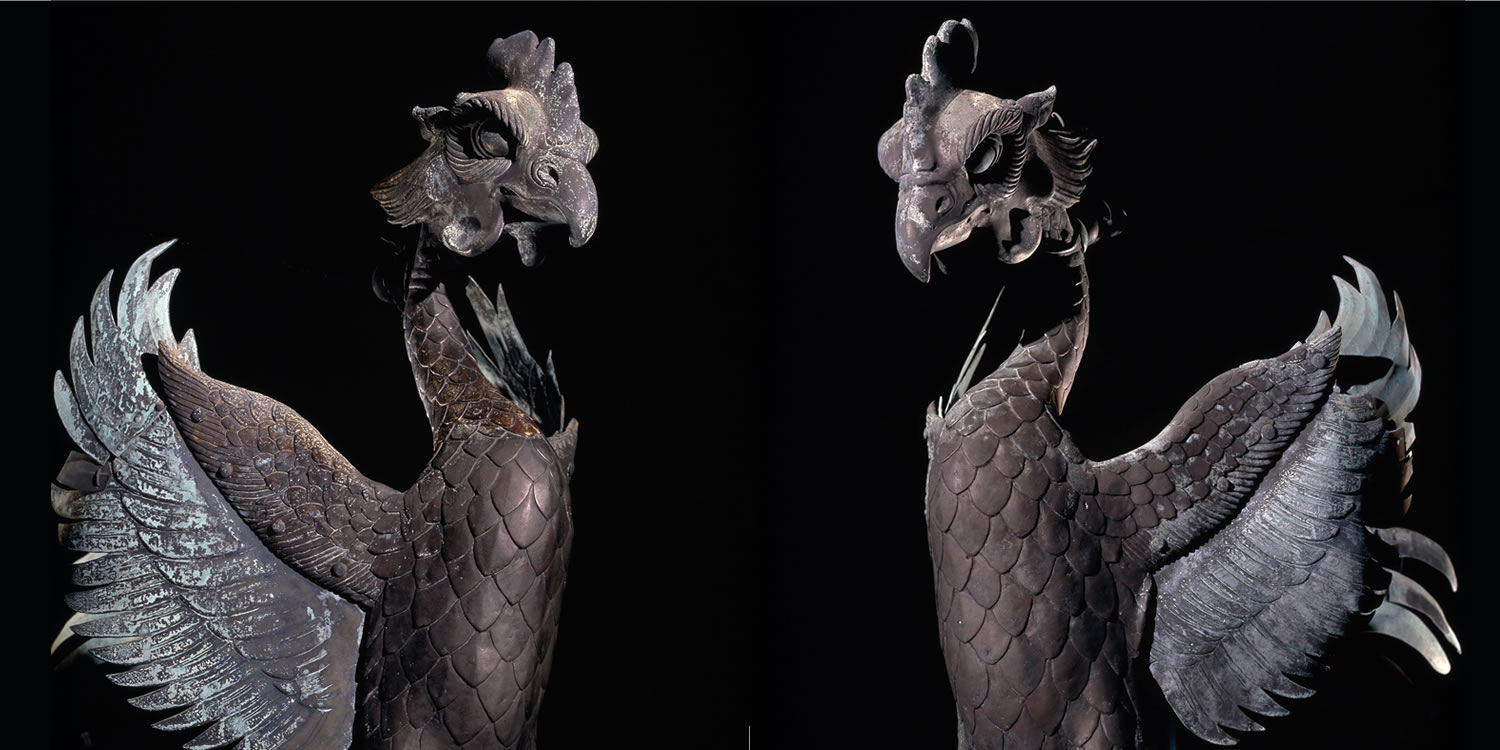
Phoenix鳳凰
[National Treasure] Bronze CastingPhoenix to the North: Height: 95.0 cm
Phoenix to the South: Height: 98.8 cm
Heian Period (11th century)
A pair of phoenix were set on the north and south ends of the roof of the Chu-do Hall (Phoenix Hall). The official name of Phoenix Hall is Amida-do Hall, however, it became to be known by the more familiar name of Phoenix Hall (Hou-ou-do) from around the modern era since its dignified appearance looked like a long-tailed bird spreading its wings wide and the hall had a pair of phoenix on the roof. Phoenix Hall faces to the east and the phoenix on the right-hand side is called the Phoenix of the North and the other on the left-hand side is called the Phoenix of the South. Due to the rust damage from air pollution, both phoenixes were removed and stored in the former temple museum. The pair on the roof today are the new second-generation ones. The original pair, designated as National Treasures, are displayed in the Hoshokan Museum today. The 10,000-yen bill has borne the figure of the Phoenix of the South since 2004.
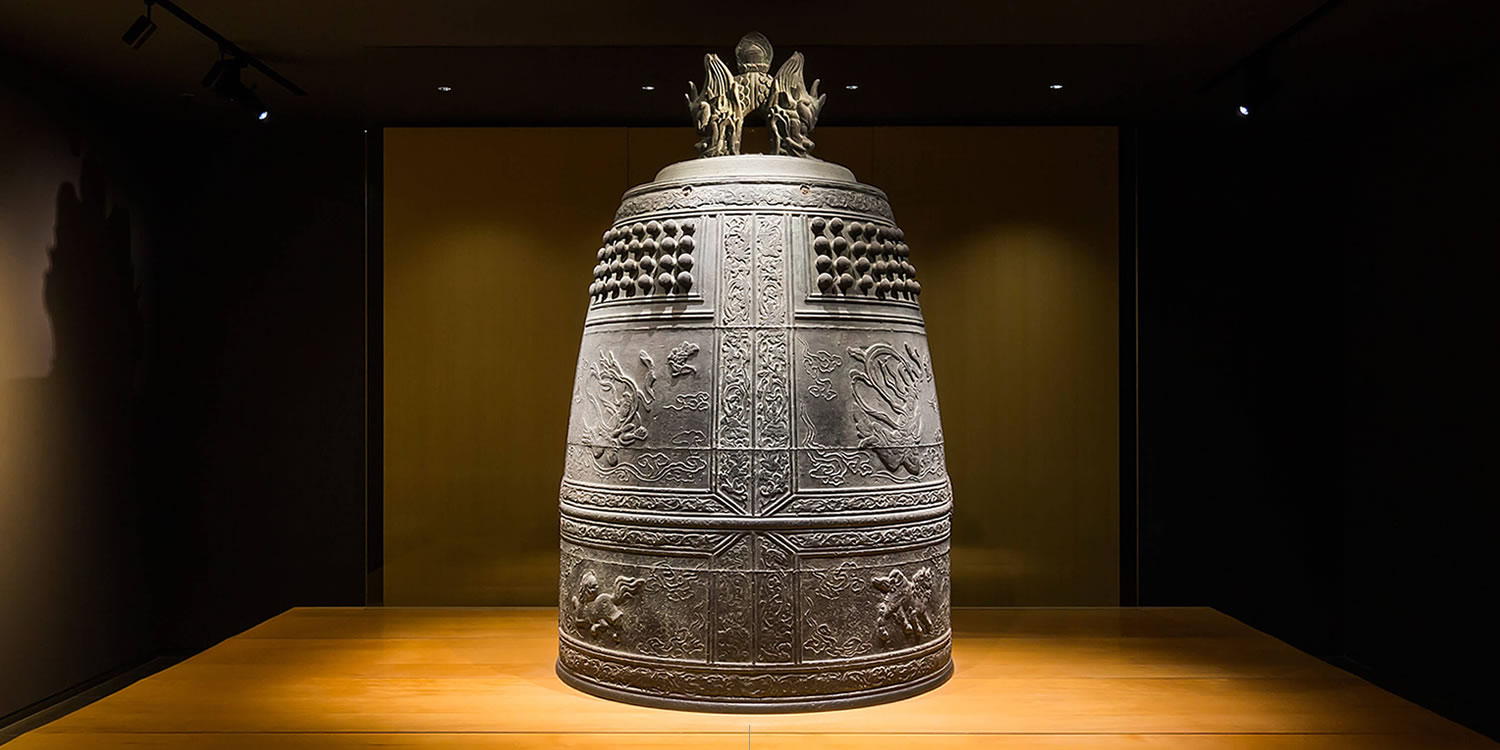
Temple Bell梵鐘
[National Treasure] Bronze CastingTotal Height: 199.0 cm
Length of Ryuzu Dragon Figure on the Top: 41.8 cm
Length of Kasagata Top of the Body of the Bell: 10.9 cm
Length of Body of the Bell: 146.0 cm
Diameter of Tsukiza: 19.7 cm Thickness of the Bell: 12.0 cm
Thickness of the Bell: 12.0 cm
Heian Period (12th century)
The temple bell used to be hung in the tower by the pond on the south side of Phoenix Hall. Due to the rust damage from air pollution, the original temple bell was removed and replaced with a reproduction. The original temple bell is one of the most important temple bells from the Heian period (794-1185). People in olden times praised three outstanding temple bells with the saying: “Byodoin Temple Bell for the Best Figure,” “Onjo-ji Temple Bell for the Best Sound,” and “Todai-ji Temple Bell for the Best Resonance.” A dragon ruffling its mane right above is set on the top and the body is inscribed with the figures of phoenixes and dancing Celestial Beings on the Hosoge (flower) and Karakusa (plant) pattern on the base. The Byodoin Temple bell was the first example of one depicting a dragon whose head is facing the Tsukiza (the spot where the wooden beam hits the bell and makes the sound). The original bell is exhibited in the Hoshokan Museum.
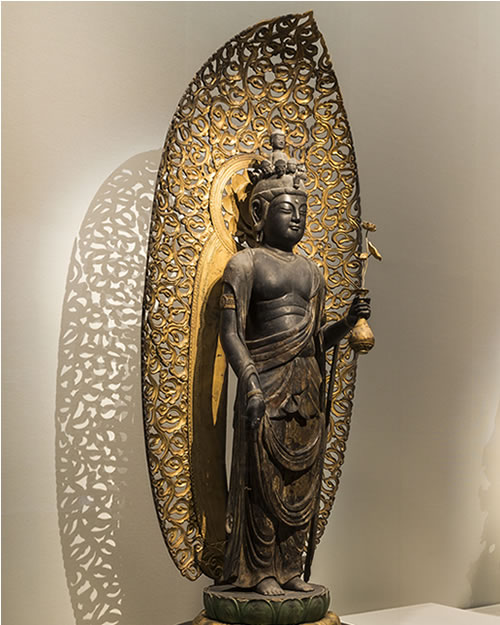
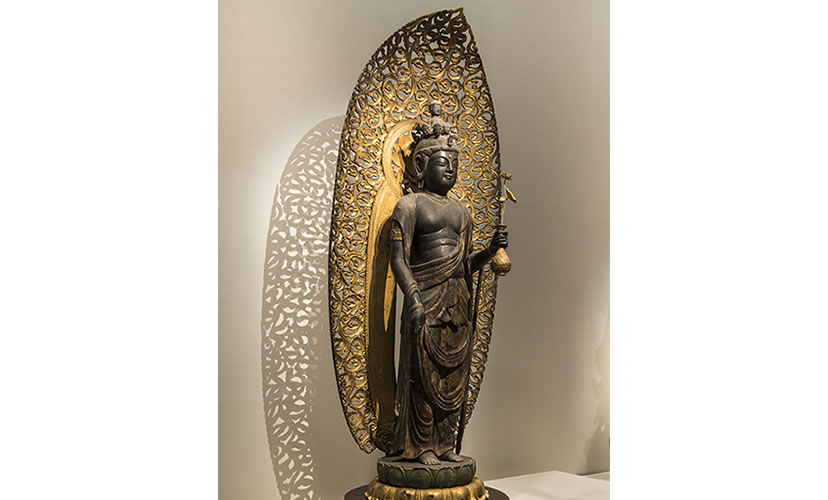
Eleven-face Kannon Buddha十一面観音立像
[Important Cultural Property] Made of wood and colored Height: 167.2 cm Heian Period (11th century)The Eleven-face Kannon Buddha was enshrined as the principal image in the Kannon-do Hall (Important Cultural Property). Usually, an Eleven-face Kannon Buddha has a laughing face on the back of his head, however, the one at Byodoin Temple does not. Many features from the older Tenpyo period (729-749) are evident which attests to the fact that this statue was created before the one of the Amida Buddha, during the time when the skills of creating Buddhist sculptures were still developing.
